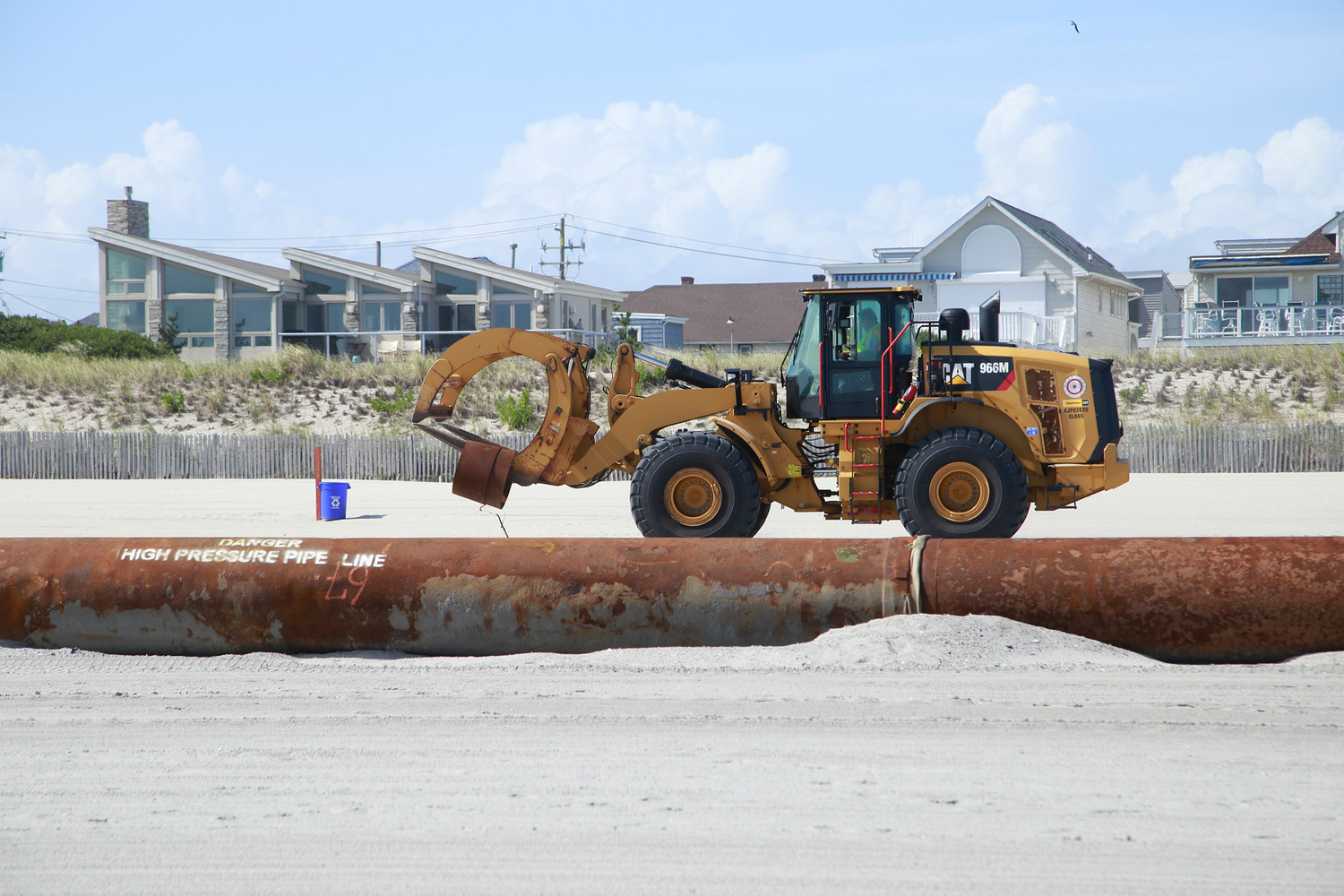Long Beach City Council OKs 24/7 Army Corps work
Around the clock sand replenishment will allow beach project to be completed earlier
The City Council voted unanimously last week to approve a noise variance that will allow the Army Corps of Engineers to work 24 hours a day, seven days a week to complete a coastal protection project that includes dunes and sand replenishment, as well as the construction of walkovers along the boardwalk.
With the corps working around the clock, the $230 million project is expected to be completed by October, nearly a year ahead of schedule.
The city granted the variance on July 17 to Great Lakes Dredge & Dock Company LLC, which was awarded a $51 million contract in April to dredge and pump 4 million cubic yards of sand as part of the project’s second phase, the construction of dunes and the replenishment of beaches from Long Beach to Point Lookout.
The project, which includes Point Lookout and Lido Beach, was slated for completion in August 2019. The corps completed its first phase — the reconstruction of 15 jetties, or groins, along the beach — over the winter.
The jetties and dunes are designed to protect seven of the nine miles of public shoreline between Jones Inlet and East Rockaway Inlet — from the east end of Point Lookout to Nevada Avenue in Long Beach — from a 100-year storm like Hurricane Sandy. The project began in Point Lookout in 2016.
The plan calls for 25-foot-wide dunes that will run parallel to the boardwalk and rise to a height of 14 feet nearest the boardwalk. The project includes 14 dune crossovers in Long Beach, and the dunes would connect with those already in place on Nickerson Beach and in the city’s West End.
Officials said that by working 24/7 beginning in the West End, the project could wrap up in Point Lookout by Dec. 21. The second phase of the project began in Long Beach, officials said, because contractors cannot work from the eastern city limit to Point Lookout until after Sept. 1 due to the environmental restrictions that protect the piping plover population during the birds’ nesting season.
The contractor is expected to complete about 200 feet of beach a day working around the clock, and the corps is also looking to finish the work while the weather permits and to avoid disrupting another beach season.
“It would more than double the length of time that we’re going to be out there,” Stuart Hilgendorf, a project manager for Great Lakes, told council members when he was asked about the implications of not granting the variance. “We work with offshore weather, and when the seas hit, we have to be out there and try to get as much done as we can when the seas are favorable, not worse.”
Still, some residents expressed concerns about the impact of the work schedule on the beach season, noise and other quality-of-life issues.
“I understand the idea of speeding it up,” said resident Kathleen O’Leary, “but this is not good for people using the beach.”
“We’re going to lose a lot of our beaches,” added John Wims. “If [the project] extends a little longer, it extends a little longer.”
But other residents lauded plans to complete the project earlier.
“We have to do this before hurricane season commences again,” resident Dina Fiore told the council. “Working 24/7 allows our beaches to be open quicker, and getting the work done faster in a shorter period of time. This should be our last summer.”
“I know it’s inconvenient for some people,” said resident Lew Dubow, “but finally getting this done, and getting the beach secured . . . before hurricane season . . . to extend it into October and November doesn’t make sense.”
The second phase of the project began last month, with pile driving for the dune crossovers at Riverside, Edwards and Magnolia boulevards. One-thousand-foot sections of the beach are being closed to allow for sand placement, which will extend the beach 200 to 300 feet between the water and the new dunes.
The dredged sand is being taken from Jones Inlet, officials said. Sand is being pumped onto the beach through a 30-inch pipe, which is moving 300 feet west each day.
Some residents complained about the comparatively dark sand being pumped onto the beach. “It’s good-quality sand, and that black color will change in about two weeks,” Hilgendorf said.
The dune crossovers will connect the boardwalk to the beach. Ten of them will be 10 feet wide, and four — at New York Avenue and National, Riverside and Neptune boulevards — will be 30 feet wide. Two of the crossovers — at New York Avenue and National Boulevard — will have restrooms, while the Riverside Boulevard crossover will have a lifeguard station.
According to the state Department of Environmental Conservation, once the piles have been installed and the sand is spread around them, the contractor can install the bridges and ramps, and then remove the existing beach access ramps from the boardwalk. A schedule for that work has yet to be announced.
Officials said that pile-driving work would only take place from 8 a.m. to 4 p.m., and that the order of the pile installation was scheduled to minimize the impact on the summer season. Crews will also limit sand replenishment to 200 feet from the boardwalk in the evenings.
The contractor said that the noise is “barely noticeable,” though some residents disagreed.
“I was down at New York Avenue the other night watching this,” said Councilman John Bendo, a West End resident. “The noise is not overly obnoxious, and we’re only talking about inconveniencing people for a day or two, at most. With hurricane season coming, I can’t in good conscience say, ‘We could have protected you, but we didn’t because we only wanted to do work during the day.’”






